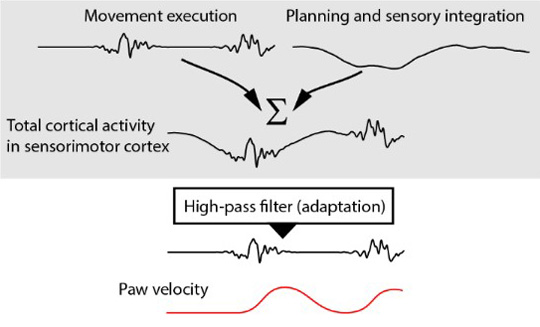How the brain differentiates between planned and actual movement
Freiburg, Sep 23, 2021
Planned and actual movements are difficult to distinguish in the brain, because both are expressed through very similar neuronal signals. A new method now makes it possible to differentiate these impulses more precisely and also to understand how a planned movement is prevented from being executed immediately. The approach was developed by a research team led by Dr. David Eriksson and Prof. Dr. Ilka Diester, member of the Cluster of Excellence BrainLinks-BrainTools from the Institute of Biology III at the University of Freiburg. The scientists recorded the activity of single neurons in rodents in several motor areas while they move about freely. Previous approaches examined conditioned movements. The researchers recently published their results in the journal Nature Communications.
Planning and execution of movements develop on different time scales
“Our research shows that in the sensorimotor cortex, neuronal motor planning processes proceed with slower dynamics than movement-related reactions,” explains Diester. Accordingly, movement planning and execution develop simultaneously in the brain, but on different time scales. While execution is based on fast neuronal changes, motor planning is based on slow neuronal changes. The slower planning processes are also prevented from being transmitted to the muscles through a filter. Because this filter only allows fast-changing signals to be converted into movements, planning does not immediately and automatically lead to movements. “We can reconcile this mechanism with existing hypotheses and schemes and it could even be a general model for motor control,” predicts Diester.
Optogenetic simulations confirm the results
In their work, the team separated continuous self-directed planning from its motor execution by minimizing the repeatability of movements for the animals studied - but not the animals' general freedom of movement. Expanding the repertoire of different, non-stereotyped movements maximized the temporal separation between ongoing planning and execution processes and thus their observability. The effect on the relevant neuronal frequencies for planning and execution was captured by a high-pass filter, and the scientists causally confirmed their results with optogenetic stimulations.
The novel experimental approach also enabled a comparison of neural processing for different types of behavior, such as moving the whole body and a joystick. And the method may also provide new insights for other open research questions, such as how motor planning is changed without affecting ongoing movements. “We see our investigative approach as a complementary method to the classical ones that can shed new light on the mechanisms of motion control,” says Ilka Diester.
Original publication:
Eriksson, D., Heiland, M., Schneider, A., Diester, I. (2021): Distinct dynamics of neuronal activity during concurrent motor planning and execution. In: Nature Communications. DOI: 10.1038/s41467-021-25558-8
Video on Ilka Diester's research on neural motion signals
8177324e9055aa83762488dfa97787d9

Motor planning and execution develop on different time lines. These two effects overlap in the brain, but can be separated again through a high-pass filter. Source: AG Diester
Contact:
Prof. Dr. Ilka Diester
Institute of Biology III
IMBIT // BrainLinks-BrainTools
University of Freiburg
Tel.: 0761/203-8440
E-Mail: ilka.diester@biologie.uni-freiburg.de
Twitter: @ilka_diester
Bastian Strauch
Office of University and Science Communications
University of Freiburg
Tel.: 0761/203-4301
E-Mail: bastian.strauch@pr.uni-freiburg.de

